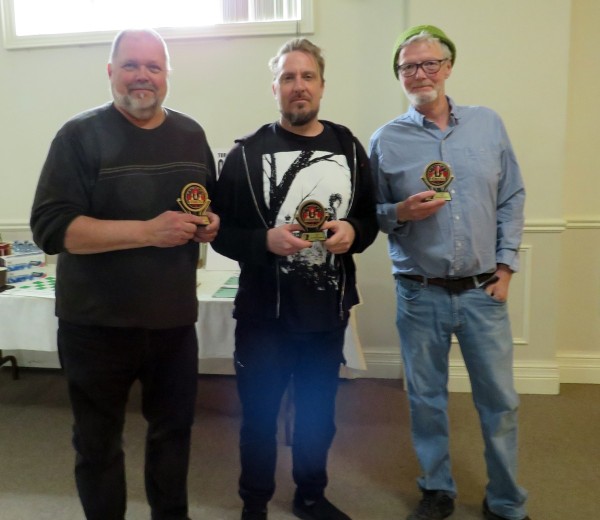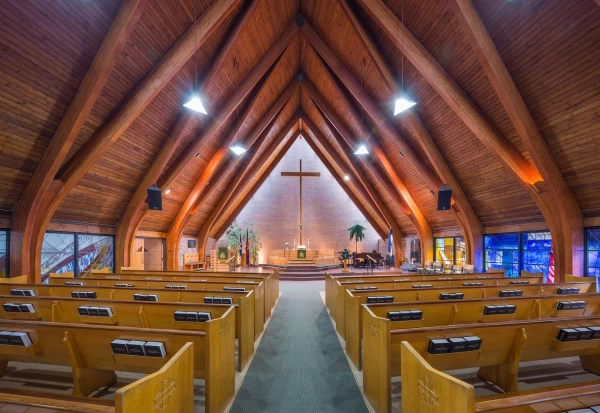E.E.L.K. and EELK - what is the difference? (7)
Eestlased Kanadas | 13 Oct 2021 | Toomas TreiEWR
Estonian Evangelical Lutheran-believing Church and Estonian Evangelical Lutheran-like Church
Eesti Evangeeliumi Luteriusu Kirik ja Eesti Evangeelne Luterlik Kirik
So why do Estonians have two churches with the same letters? What is the difference between these churches, the one with periods, and the one without periods? There is one major difference which this article will identify.
Christianity was first introduced into the Livonian area of the Baltic, [now present day Estonia and Latvia], by Catholic and Orthodox missionaries, in the 10th Century. By 1227, the Estonian tribes had been conquered by the Christian invaders, with the northern and western coasts falling under Danish rule, and the rest of Estonia falling under German rule. After the Estonians’ Jüriöö uprising of 1343, the Danes sold their Estonian territory to the German Livonian Teutonic Order. Thus in 1345, all of Estonia was under German domination, which stayed as the main cultural influence on Estonian development until 1917.
After the Reformation led by Martin Luther brought the Bible directly to worshippers in the early 16th century, the German-Estonian churches also converted to Lutheranism. Even when the Estonian territory was later conquered by Polish, Swedish and Russian armies, the German barons, who had built the manorial society, would pay tribute to their military and administrative overlords, while continuing to profit from the exploitation of the Estonian serfs.
During the war of independence against the German Landeswehr and the Russian Bolsheviks in 1919, Estonians pulled together their First Church Congress which saw the formation of the Estonian Evangelical Lutheran-believing Church [E.E.L.K.]. The new E.E.L.K. was created by parish representatives who established a localized, “bottom up” democratic order in its 1919 Constitution. “Article 1. “The Estonian Evangelical Lutheran Church is a free church of the people and is administered by its own autonomous governing body.”
During the 1920s and 1930s, the new E.E.L.K. found its place as a prominent national institution. It helped Estonians bond as a people, nurtured their devotion to faith and spiritual fulfillment, and established the Estonian Evangelical Lutheran-believing Church at the heart of every community. At the beginning of World War II, approximately 78% of Estonians considered themselves Lutheran. That ended in 1940 when the atheistic, communist Soviet Union occupied Estonia restricting most activities including church participation.
As the Soviets waged a brutal military assault in September 1944, 80,000 Estonians, from all walks of life including many freedom fighters escaped to the West, seeking refuge from Soviet tyranny, before the invaders could seal the border. Many refugees eventually settled in Toronto, and in 1948 they established the St. Peter’s Estonian Congregation on the democratic model of the familiar 1919 E.E.L.K. Constitution. The members of Toronto’s St. Peter’s Estonian Congregation worked hard, and were able to build for themselves the St. Peter's Estonian Church at 817 Mt. Pleasant Road, which opened its doors in 1956. St. Peter's Church became a hub for Toronto Estonians with its Sunday School and Sunday Services, while also hosting the Boy Scouts and Girl Guides, and many, many community and family events!
After the Soviets had re-occupied Estonia, they set about creating a new autocratic, communist society where Christianity and all religions were outlawed. Nevertheless, in April 1949, one month after the March 25 deportation of 20,000 Estonians into the Siberian Gulag, Stalin allowed the formation of the top down, authoritarian Estonian Evangelical Lutheran-like Church, [EELK], which was to help the Soviets oversee and control the subjugated population. EELK played a role similar to other Soviet organizations, reporting to the Communist Party and the NKVD [later KGB]. Youth, evangelical, and missionary work were criminalized, and Church properties were confiscated. This new, misnamed EELK reported to the Council of Religious Affairs in Moscow. As youth, evangelical and mission work were never EELK objectives, the more accurate name for this creation would have been, the Estonian Soviet [Nõukogu] Lutheran-like Church [ENLK].
With the collapse of the Soviet Union in 1991, Estonia along with many other Central European countries escaped from Soviet communism and reclaimed their freedom and independence. The various levels of Estonian governments, and many other organizations, reorganized themselves into member-voting, democratic structures. Unfortunately at this time, EELK’s leadership did not take steps to democratize its institution. They preferred to maintain the existing communist autocratic hierarchy, as they saw it better enabling their career ambitions.
Thus in 1991, EELK’s leadership, [who only knew the communist way – as prior to this time all ordained ministers had to be vetted by the Communist Party and KGB], made the conscious decision to stay as a communist structured organization. Was thought given to moving back to the original 1919 free Estonians created E.E.L.K. Constitution? Should EELK have released all Lutheran church properties back to their original parishes?
Beginning in 2008, Bishop Taul started pushing the St. Peter’s Congregation and other Canadian Estonian Lutheran congregations to “unify” with the Communist era EELK. Taking the 1919 E.E.L.K. democratic Christians into the 1949 communist created EELK in 2010, was a mistake. In reality, this has turned out to be a mere subjugation of the Toronto St. Peter’s Estonian Congregation, (and other Canadian Estonian congregations) to the lucre, political power, and control seeking individuals running EELK.
This past summer, the Estonian media sites Eesti Päevaleht and Levila looked at EELK from many perspectives. Some of the topics that were explored: EELK accessing government funding, freemasons leading EELK’s real estate dealings, female ministers’ employment, and how EELK’s wealthy Tallinn class stands in stark contrast to the badly underfunded local parishes.
Jesus’ advice for these types of leaders in Matthew 23. 25-26, “Woe unto you, scribes and Pharisees, hypocrites! for ye make clean the outside of the cup and of the platter, but within they are full of extortion and excess. 26 Thou blind Pharisee, cleanse first that which is within the cup and platter, that the outside of them may be clean also.”
In summary, E.E.L.K. (with the periods) stands for free peoples’ democratic churches, where congregations determine their own directions and ministers. On the other hand, EELK (without the periods) is a communist era remnant, whose administrators are not capable of serving democratic congregations, and can only exist in a top down autocratic structure. The reality is, in 1938, 78% of Estonians considered themselves Lutheran. During the Soviet era, church attendance decreased sharply. However, there was a revival after the 1988 Singing Revolution, and Estonia’s re-independence in August 1991. Unfortunately, the communist styled EELK has become so unattractive, that now less than 10% of Estonians consider themselves Lutheran. Many former Lutheran Estonians now seek Christian spiritual solace and guidance in Baptist and Methodist Congregations.
For years, the communist era leadership of EELK has been trying to create the impression that it is the righteous successor to the 1919 E.E.L.K. Unfortunately, with their un-democratic, autocratic approach, they can only be a successor of themselves, and their 1949 roots.
If however, EELK adopts the E.E.L.K. 1919 Constitution for its parishes, giving congregants the ability to decide how they want their congregations and churches to proceed, then a case could be made, that from then onward, EELK might be given successor consideration. A good start would be bringing Toronto’s Estonian St. Peter’s and St. Andrew’s Congregations together under the E.E.L.K.'s ‘free church of the people’ Constitution.
TOOMAS TREI
Viimased kommentaarid
Kommentaarid on kirjutatud EWR lugejate poolt. Nende sisu ei pruugi ühtida EWR toimetuse seisukohtadega.
Many believe that when it came to the Estonians Church "overseas", to present "100 years of The Estonian Church", there was no such thing! In Estonia itself during war years of 1940-1972, churches were shuttered, people were prevented a religion and hence since more than 70 years of Communisms rule, there was no Lutheran Church in Estonia. But Canada, especially Toronto had a large 3500 person Estonian refugees congregation that was especially attractive. A deal was made, I suggest, and we were misled into a union which only benefitted one side! Tallinn never wanted it to work or flourish here. And now we find in Toronto, that a potential sale is being arranged by overseas church leaders for a unique and beautiful church which they never paid for nor purchased, but will pocket millions! Another plunder in Toronto. We were too trusting and naive!
The Bait proposed how wonderful it would
be to join together with kodu eesti kirik.
The Switch was they changed the Vaba
Rahva Kirik Constitution 180 degrees.
Peetri Kirik surrendered its self- determination and Treasury/Assets to a body (EELK) thousands of kms. away.
be to join together with kodu eesti kirik.
The Switch was they changed the Vaba
Rahva Kirik Constitution 180 degrees.
Peetri Kirik surrendered its self- determination and Treasury/Assets to a body (EELK) thousands of kms. away.
A very well-written and informative article.
Eestlased Kanadas
TRENDING

























